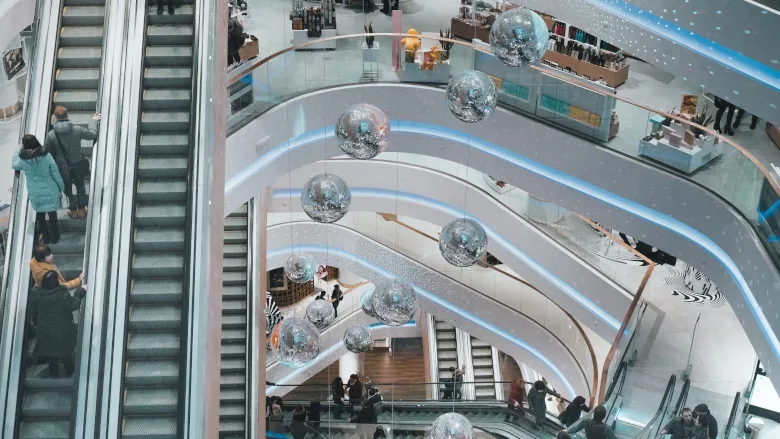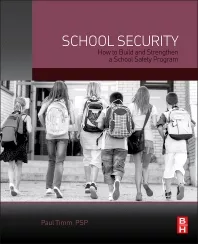Mitigating retail violence requires a layered approach

Image via Unsplash
Retail violence has increased significantly in the past few years. According to the National Retail Federation’s 2023 Retail Security Survey, 88% percent of retailers reported that shoplifters are more aggressive and violent compared with one year ago. And those that specifically track the number of violent shoplifting incidents reported that they saw their number of shoplifting events involving violence increase by over one-third (35%) on average.
No retailer is immune. Convenience stores, fast food restaurants, grocery stores and malls are likely targets. Any type of retailer can experience in-store violence, with perpetrators ranging from unstable or angry individuals to organized retail crime (ORC) gangs.
While the health and well-being of workers and customers is of the utmost concern, business sales can be impacted too. Large retailers are closing stores in major US cities, in part due to increased violence against workers as well as substantial losses from theft.
Contributing factors
ORC operations know how to exploit local laws and steal goods in quantities that remain under the felony dollar-amount threshold. For them, retail crime is a business opportunity with few penalties and little risk.
Police departments and first responders often need to do more with fewer resources, and petty crimes, such as shoplifting, are sometimes not prioritized. This leads to recidivism and escalation to more violent crimes.
Furthermore, no issue is worth putting an employee’s safety at risk. Many retailers are now instructing staff not to intervene personally if they see shoplifters pushing a cart full of unpaid merchandise out the door. While these thefts may lead to losses, they can escalate quickly with worse consequences. These policies help avoid violent encounters but also embolden thieves.
Impacts to retailers
Rising retail violence impacts retailers in many ways. The most obvious is the potential for injuries to staff and customers. Retailers are also facing financial losses, including both the cost of goods that may be broken or taken as well as damage to the property. But there are also less tangible considerations.
The first is staff turnover. This is a major consideration, especially given the staffing shortages that many businesses already struggle with today. The average employee starting work in a retail chain, or a quick service restaurant is young, often a first-time employee. Their parents may encourage them to leave for safety reasons, or they simply don’t feel comfortable continuing to work in an environment where they feel that they are at risk.
There’s also the potential for negative publicity that impacts the reputation of the brand. This could include negative comments on social media or videos that become viral. These can affect more than a single store location as customers start associating that brand with a violent incident.
Multi-layered security approaches can help
Retailers often add video surveillance or security guards as threat levels increase. However, these tried-and-true deterrents aren’t always enough to combat retail violence. Standard operating procedures (SOPs) based on threat conditions of the past may not help solve new problems associated with retail violence. Likewise, keeping merchandise, such as personal care items, in locked cabinets impacts sales and inconveniences honest customers with short staffing.
Retailers are turning to technologies that can increase real-time situational awareness, deter criminal acts, gather evidence and enhance collaboration with local law enforcement.
Real-time situational awareness
A unified security platform integrates a range of technologies from a single command center, giving stores the ability to identify and respond to threats faster. For example, a unified platform can combine video from various sources like automatic license plate recognition (ALPR), facial recognition, or body-worn cameras equipped with real-time analytics for detecting known suspects or vehicles, which may signal a crime is about to occur.
Unified security platforms can also include automated SOPs to put emergency plans into place instantly, such as notifying employees and law enforcement.
Modern deterrents
Self-checkout stations are an increasingly common target for criminal activity. Weight sensors and overhead cameras connected to a unified security platform can alert staff to irregular activity and speed responses.
Body-worn cameras (BWCs) are also being tested. To enhance employee safety, provide real-time visual awareness of situations or escalations and provide visibility where fixed security cameras aren’t present. Early feedback indicates that stores testing them are realizing the benefits.
Evidence gathering
Retailers are being encouraged by law enforcement to bolster evidence gathering and collaborate with other retailers to bring down large ORC theft and fencing operations. Modern security systems with cloud-based storage and sharing capabilities can easily meet those needs.
More retailers are using ALPR systems to monitor and track vehicle information. ALPR systems help identify criminals whose license plates are on a hotlist when they enter a store’s perimeter or parking lots.
And to manage the massive amounts of video and data retailers are finding digital evidence management systems invaluable. These systems also support collaboration with law enforcement agencies, attorneys and the public.
Private and public collaboration
Security technology that integrates with local law enforcement can produce crime-fighting partnerships. For example, a major US city has partnered with multiple retailers in a specific area that had repeated robberies and violence. Those retailers installed real-time camera connections that are visible to the police department’s real-time crime center. This aids in threat assessment and early dispatch, giving responding officers visibility into emergency situations.
Active programs to recruit police officers, along with a national approach to prosecuting retail crimes, can also strengthen crime prevention.
Making stores smarter and safer
A retailer’s top priority is to keep its employees and customers safe. Technology is one tool that helps retailers mitigate retail violence.
A multi-layered approach that includes unified security platforms, sophisticated real-time analytics and private-public collaboration can help. While there will always be criminal activity, retail stores can take steps to protect their brand, their inventory and most importantly, their employees and customers.
Looking for a reprint of this article?
From high-res PDFs to custom plaques, order your copy today!



.webp?height=200&t=1686342393&width=200)



